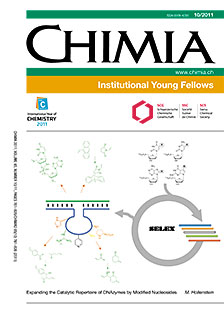Field-controlled Self-assembly and Disassembly of Colloidal Nanoparticles
DOI:
https://doi.org/10.2533/chimia.2011.792Keywords:
Cluster disassembly, Flow fields, Magnetic fields, Nanoparticle self-assembly, Porous materialsAbstract
Self-assembly of nanoparticles is one of the most promising methods for the preparation of novel materials and devices with exceptional properties. In order to control nanoparticles self-assembly, an understanding of their interactions is absolutely necessary. One convenient way to achieve a control on their interaction is through the use of external fields. Here we provide two different examples of how interparticle interactions are affected by interactions with external fields. In the first case, magnetic fields are used to induce dipolar interactions among concentrated suspension of superparamagnetic nanocolloids, which cause them to self-assemble into dense chain-like anisotropic structures, used as templates for the growth of porous materials with tunable properties. In the second case, it is shown how more commonly employed but less understood flow fields interact with clusters of particles, and lead to their restructuring or disassembly depending upon the shear stress applied.Downloads
Published
2011-10-26
Issue
Section
Scientific Articles
License
Copyright (c) 2011 Swiss Chemical Society

This work is licensed under a Creative Commons Attribution-NonCommercial 4.0 International License.
How to Cite
[1]
M. Lattuada, M. Furlan, Y. Harshe, Chimia 2011, 65, 792, DOI: 10.2533/chimia.2011.792.







